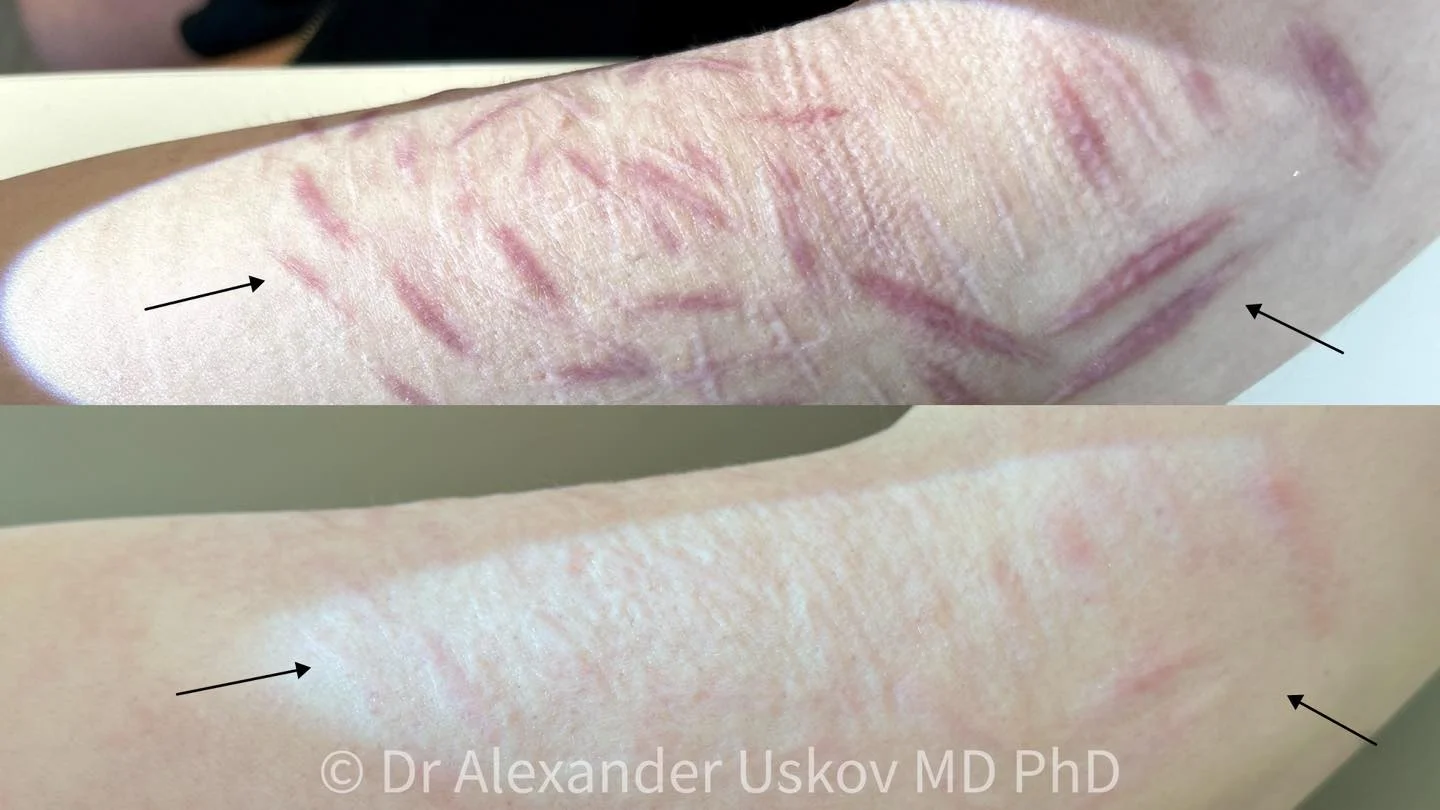Laser removal of trauma scars
- gertnulk
- Nov 11
- 3 min read

Relevance of the problem and impact on quality of life
Traumatic scars are a common consequence of burns, cuts, and other skin injuries. They can vary by type (atrophic, hypertrophic, or keloid) and often cause not only aesthetic concerns but also physical discomfort: itching, tenderness, tightness, and restricted mobility. All of this affects a person’s quality of life and sense of well-being.
History and development of laser methods for scar treatment
The first attempts to use lasers for scar correction began in the second half of the 20th century, with the advent of CO₂ lasers for skin resurfacing. Today, technology has advanced significantly: fractional and non-ablative systems have emerged, enabling gentle, precise, and safe treatment.
At Dr. Uskov’s clinic, all modern lasers are available, both ablative and non-ablative, including fractional and non-fractional modes.

Scientific evidence of safety and effectiveness
The effectiveness of laser scar treatment is supported by dozens of clinical studies. Ablative (CO₂, Er:YAG) and non-ablative lasers have proven effective for all types of scars like atrophic, hypertrophic, and keloid.
Fractional lasers create microchannels in scar tissue, stimulating natural renewal and the formation of new, healthy skin. After just one session, patients often note improved texture and reduced itching and tightness.
Combining technologies like fractional Er:YAG laser with PRP therapy or a diode laser enhances the effect and speeds recovery.
For burn and contracture scars, laser therapy reduces thickness, itching, and pain, lightens pigmentation, and restores skin elasticity.
Course of treatment at Dr. Uskov’s Clinic
Our technologies and individualized approach
At Dr. Uskov’s clinic, we use a comprehensive approach and only certified medical lasers. Every procedure parameter like wavelength, power, depth of impact are selected individually to ensure safety and predictable results.
We use all the key technologies employed in modern laser medicine:
Ablative lasers (CO₂, Er:YAG) for active tissue remodeling;
Non-ablative (Nd:YAG, Thulium, IPL) for gentle stimulation and smoothing of skin texture.
Comprehensive protocol-based treatment course
Traumatic scars are usually treated as a course. One procedure is not enough for a complete result. According to Dr. Uskov’s protocols, different laser technologies are combined and selected strictly on an individual basis.
Early scars are corrected faster and produce a more pronounced effect.
Mature scars require a greater number of procedures.
A course typically consists of 3 or more sessions, with recovery monitoring and additional therapy between them.
Diagnostics before starting therapy
Before treatment begins, an in-person consultation with detailed diagnostics is conducted. Depending on the case, digital dermatoscopy, Wood’s lamp, infrared imaging, and ultrasound of the skin and scar may be used.
This approach allows for an accurate assessment of tissue structure and the selection of the optimal treatment strategy specifically for your case.
Safety and reliability
Safety is the foundation of every protocol. Thanks to our many years of experience and the clinic’s narrow specialization, we precisely control treatment depth and power, ensuring a gentle approach with the best possible results.
Realistic expectations
Every scar is unique. Outcomes depend on its type, depth, age, and the patient’s individual characteristics.
Fresh scars respond to correction more quickly; mature scars take more time but with the right strategy, improvement is achieved in any case.
Frequently asked questions
Can you completely get rid of a traumatic scar?
Complete removal isn’t possible, but laser therapy can make a scar nearly invisible and restore smooth skin.
How many procedures will I need?
A course usually includes 2–4 sessions, but the exact number is determined by the doctor after diagnosis.
When is it best to start treatment?
The sooner, the better. However, even mature scars are successfully corrected.
How safe is the procedure?
When performed with medical-grade equipment under an experienced specialist’s supervision, risks are minimal.
How do I know if laser treatment is right for me?
The doctor will determine this after diagnostics like dermatoscopy, ultrasound, and an assessment of tissue condition.
Consultation and more
To learn what results are possible in your specific case, book an in-person consultation.
At the appointment, the doctor will explain the treatment details, possible limitations, and recovery stages, and will also examine and assess the scar.
PS: To learn even more about the treatment of traumatic scars and scar treatment in general you can also visit Dr. Uskov’s blog about scars at scarsinfo.com



















